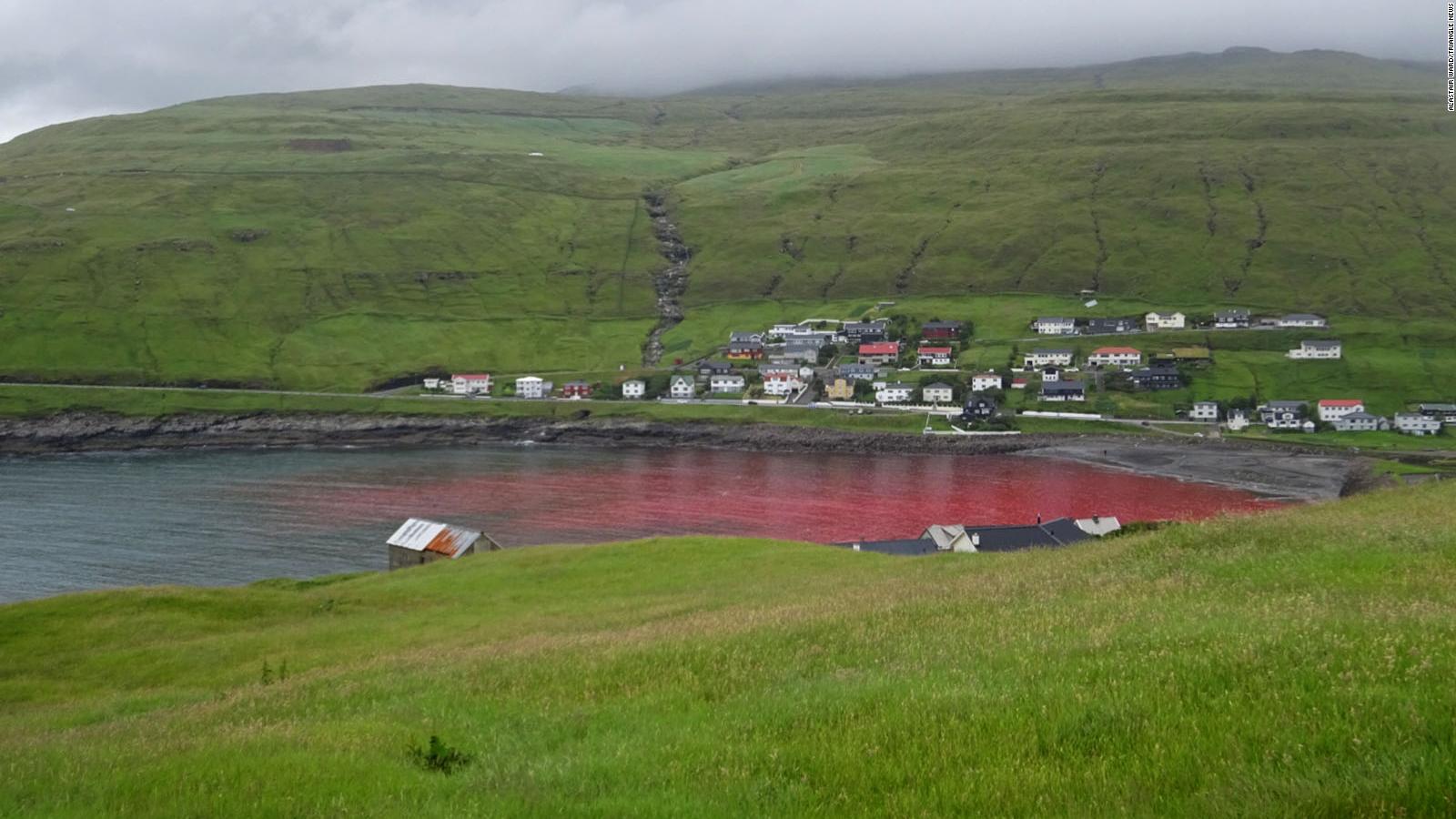The picturesque archipelago of the Faroe Islands, known for its breathtaking scenic beauty and rich cultural heritage, has recently gained notoriety for a rather dark and controversial practice—the annual whale slaughter known as the grindadráp. Captivating images from these events have made their way across social media, with one particular image standing out: a striking sea of crimson that has generated both intrigue and humor. This piece will explore the phenomenon surrounding the depiction of this “Sea of Blood” and how it complements the expectations and reactions of viewers around the globe.
The Artistic Capture of a Grim Tradition

The notion of capturing something so starkly beautiful yet unsettling can elicit a myriad of responses. This photograph showcases the water tinged with red, presenting a juxtaposition of life and death. It evokes a sanguineous panorama that is difficult to ignore. The bloody hues contrast sharply with the idyllic landscapes often associated with the Faroe Islands, provoking both laughter and horror from those who stumble upon it. The absurdity of the situation often leads observers to reflect on the multifaceted interpretations of nature—beautiful yet brutal, serene yet savage.
Visual Interpretations and Media Influence

In today’s digital age, visual content reigns supreme. The image of the “Sea of Blood” has garnered attention not only for its shocking appearance but also for its placement in various media formats. On platforms like YouTube, the image is often paired with dramatic soundtracks and commentary, transforming the ordinary into something sensational. This change of context serves to heighten the comedic effect—the juxtaposition of such a grotesque image set against a theatrical background creates a bizarre spectacle that invites laughter and disbelief. Perhaps it’s this absurdity that has caused many to share it, drawing connections to the exaggerated emotional responses one might find in a satirical news segment.
Rethinking Cultural Symbols

While the image invites humor, it also encourages a reevaluation of cultural traditions. The Faroe Islands have a long-standing history of whaling that is deeply rooted in their customs and livelihoods. However, as the image circulates, many begin to question the morality of such practices. The irony lies in how humor can amplify serious discussions about ethics in culture. People often resort to humor as a coping mechanism—by making light of an otherwise heavy topic, they find a way to engage with it. This phenomenon creates a complex interplay between laughter and reflection, wherein the sea of blood serves as both an art piece and a political statement.
The Unintentional Comedy of Nature

The imagery in the Faroe Islands doesn’t end with the bloodied waters. Nature often has an uncanny ability to evoke laughter through unexpected presentations. Picture this: the rising sun casting a glow over the serene waters, contrasted by a shocking splash of red. The absurdity presents a comedic irony; it’s almost cartoonish in its surrealism. The allure of these striking visuals invites enthusiasts to create memes, and the meme culture thrives on absurdity. Cultural contexts collide, as the grim narratives depicted in traditional whaling practices meet with modern entertainment, allowing for a playful examination of expectations about what is deemed humorous.
The Shock Value Factor

Shock value plays a pivotal role in humor, and the bloodstained waters embody this principle. As viewers confront this image, the initial reaction often shifts from shock to amusement—after all, laughter frequently arises from discomfort. The glibness with which the sea is depicted can serve as a peculiar, if not macabre, expression of human nature. Why do we laugh at tragedy? Perhaps it stems from our instinctual need to process emotional overload in a manner that is slightly more palatable. Thus, the “Sea of Blood” becomes a metaphor for the absurdity enveloping our reactions to grim realities.
Environment and Public Opinion

As global environmental concerns grow, the images of the Sea of Blood ironically juxtapose with the ideals of conservation. Comedy often serves as a catalyst for discussions about pressing issues. The absurdity of the situation creates opportunities for public discourse, where viewers share their thoughts—ranging from “this is nature” to “this should not happen.” The image transforms from shocking display to a symbol of a cultural clash between tradition and modern sensibilities. What happens when historical practices clash with evolving values? Laughter ensues as the discourse surrounding the image prompts deeper understanding of ecological ethics and sustainability.
The Legacy of the Sea of Blood

Ultimately, the legacy of the Sea of Blood in the Faroe Islands will be shaped by these multifaceted interpretations. Through humor, critics and supporters alike reflect on the implications of the visual imagery. As people post, share, and comment, a collective narrative begins to rise—a narrative that encompasses shock, laughter, and contemplation. We will remember the Sea of Blood as more than a gruesome spectacle, but as a window into our reactionary humanity and the paradoxes of our cultural practices. In this complex tapestry woven with serious undertones, the bloodied sea reminds us of both the gravity and the absurdity of tradition in the modern world.




